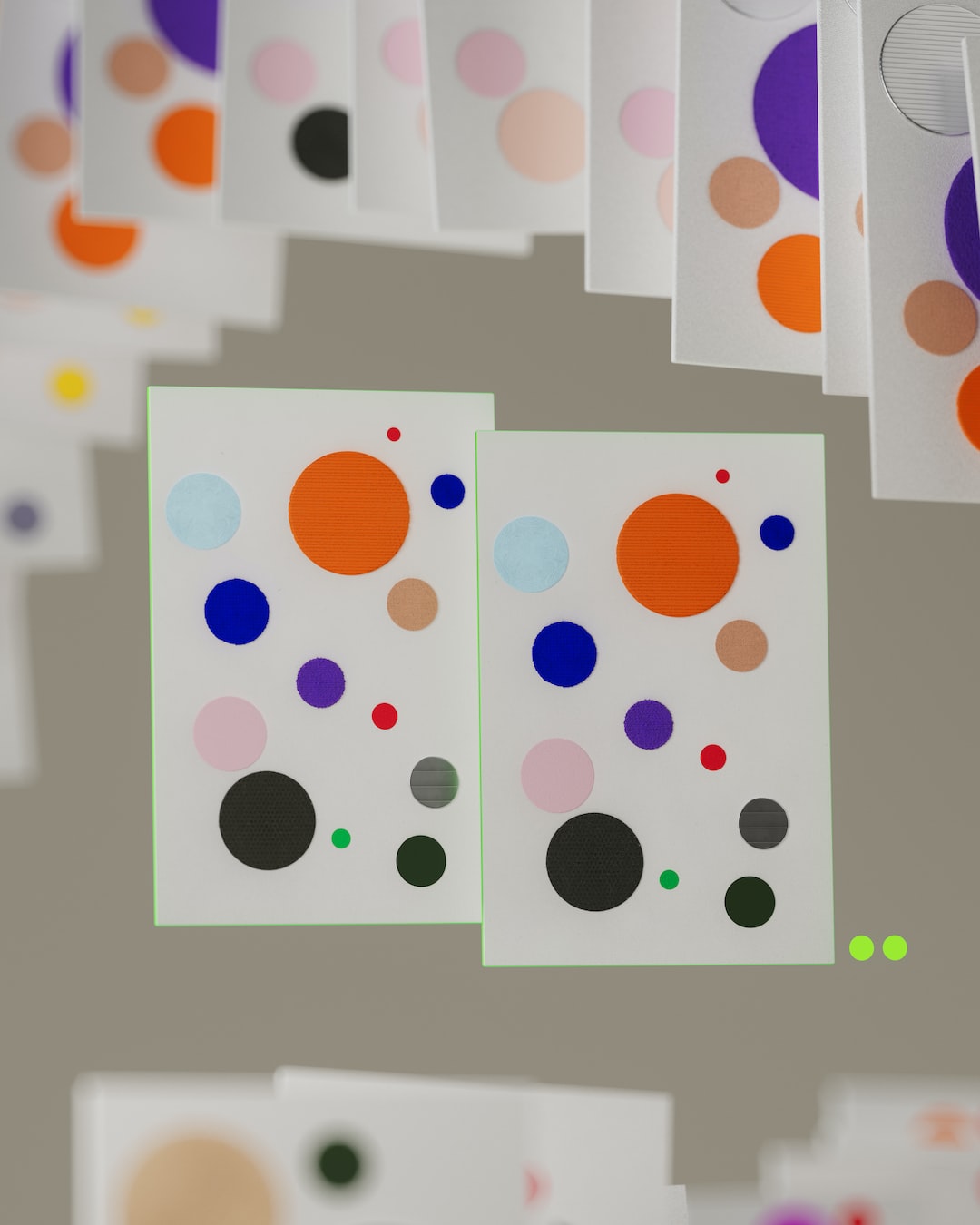Support our educational content for free when you purchase through links on our site. Learn more
[2023] The Ultimate Guide to 3D Printing Polymers: Everything You Need to Know

Explore the fascinating world of 3D printing polymers and unleash your creativity
Introduction
Welcome to the ultimate guide to 3D printing polymers! In this comprehensive article, our team at 3D Printed™ will take you on a journey through the exciting world of 3D printing with polymers. Whether you're a beginner or an advanced user, we've got you covered. We'll explore the different technologies, applications, and trends in polymer 3D printing. So, buckle up and get ready to dive deep into the possibilities of this innovative technology!
Table of Contents
- Polymer 3D Printing: The Technologies
- Vat Polymerization
- Material Extrusion
- Powder Bed Fusion
- Material Jetting
- Polymer 3D Printing: The Opportunities and Applications
- Exciting Technological Developments in Polymer 3D Printing
- Polymer 3D Printing Trends
- Things to Consider When Adopting Polymer 3D Printing In-House
- The Future of Polymer 3D Printing
- FAQ
- Quick Tips and Facts
- Useful Links
- Reference Links
Polymer 3D Printing: The Technologies
Vat Polymerization
In vat polymerization, a liquid photopolymer resin is selectively cured using a light source, typically UV light, which solidifies the material layer by layer. This technology is known for its high level of detail and accuracy, making it ideal for producing intricate and delicate objects. Here are a few key points to know about vat polymerization:
- Pros:
- High level of detail and accuracy.
- Wide range of materials available.
- Suitable for complex geometries.
- Cons:
- Relatively slower print speed compared to other technologies.
- Limited build size.
Material Extrusion
Material extrusion, also known as fused deposition modeling (FDM), is the most common 3D printing technology. It works by extruding heated filament through a nozzle, depositing the material layer by layer to form the object. Here are a few things to know about material extrusion:
- Pros:
- Wide variety of materials available.
- Fast print speed.
- Wide range of compatible 3D printers.
- Cons:
- Lower level of detail compared to vat polymerization.
- Limited strength for certain applications.
Powder Bed Fusion
Powder bed fusion is a technology that utilizes a powdered polymer material, which is selectively fused together using heat or laser. This process allows for the creation of objects with complex geometries and high strength. Here are a few key points about powder bed fusion:
- Pros:
- High strength and durability.
- Ability to create complex geometries.
- Wide range of materials available.
- Cons:
- Expensive equipment and materials.
- Complex post-processing requirements.
Material Jetting
Material jetting is a technology that functions similar to inkjet printing. It works by jetting small droplets of liquid photopolymer onto a build platform, which are then cured using UV light. Material jetting offers high precision and the ability to produce multi-material and multi-color objects. Here are a few things to know about material jetting:
- Pros:
- High level of detail and resolution.
- Multi-material and multi-color capabilities.
- Wide range of materials available.
- Cons:
- Expensive equipment and materials.
- Limited build size.
Polymer 3D Printing: The Opportunities and Applications
The applications of polymer 3D printing are vast and ever-expanding. From prototyping to manufacturing, this technology has revolutionized various industries. Here are some of the key opportunities and applications of polymer 3D printing:
- Rapid Prototyping: 3D printing polymers allow for fast and cost-effective prototyping, enabling designers to iterate and test their designs quickly.
- Customized Manufacturing: With 3D printing, it's possible to create customized products tailored to individual needs, leading to a more personalized manufacturing process.
- Medical and Dental: Polymer 3D printing has found applications in the field of medicine and dentistry, enabling the production of patient-specific implants, models, and surgical guides.
- Art and Design: Artists and designers can explore new possibilities with polymer 3D printing, allowing them to bring their imaginations to life in a tangible form.
- Education: 3D printing polymers provide a hands-on learning experience, making complex concepts more accessible and engaging for students.
Exciting Technological Developments in Polymer 3D Printing
The field of polymer 3D printing is constantly evolving, with new advancements and innovations emerging regularly. Here are some exciting technological developments to keep an eye on:
- Continuous Liquid Interface Production (CLIP): CLIP is a technology that uses a continuous liquid interface to rapidly and continuously grow objects. It offers faster print speeds and the ability to produce parts with exceptional surface quality.
- Multi-Material 3D Printing: The development of multi-material 3D printing allows for the creation of complex and functional objects with different properties and colors in a single print.
- High-Temperature Materials: Advances in material science have led to the development of high-temperature polymers that can withstand the demands of more challenging applications, such as aerospace and automotive industries.
Polymer 3D Printing Trends
As polymer 3D printing continues to advance, several trends are shaping the industry. Here are some notable trends to watch out for:
- Improved Material Properties: The development of new polymer formulations and composites is enhancing the mechanical, thermal, and chemical properties of 3D printed objects, expanding their range of applications.
- Increased Adoption in Manufacturing: As 3D printing technology becomes more accessible and cost-effective, manufacturers are integrating it into their production processes to streamline operations and reduce costs.
- Sustainability and Recycling: With a growing focus on sustainability, there is an increasing interest in developing biodegradable polymers and implementing recycling programs for 3D printed parts and waste materials.
Things to Consider When Adopting Polymer 3D Printing In-House
If you're considering adopting polymer 3D printing in-house, there are several factors to consider. Here are some key points to keep in mind:
- Cost: Assess the initial investment, including the cost of the 3D printer, materials, and maintenance. Additionally, consider the overall cost savings in terms of time and resources.
- Application and Material Compatibility: Determine the specific requirements of your intended applications and ensure that the chosen 3D printing technology and materials align with those needs.
- Training and Support: Familiarize yourself with the operation and maintenance requirements of the 3D printer. Consider the availability of training resources and technical support from the manufacturer.
- Post-Processing: Understand the post-processing requirements for your chosen 3D printing technology, including cleaning, curing, and finishing processes.
- Scalability: If your needs may grow in the future, consider the scalability of the chosen 3D printing technology and the ability to upgrade or expand your setup.
The Future of Polymer 3D Printing
The future of polymer 3D printing looks incredibly promising. As technology advances, we can expect even more exciting developments in the field. Here are some potential future trends:
- Improved Speed and Efficiency: Continuous advancements in hardware and software will lead to faster and more efficient 3D printing processes, reducing print times and increasing productivity.
- Advanced Materials: The development of new materials with enhanced properties will open up new possibilities for polymer 3D printing, enabling applications in areas such as electronics, healthcare, and construction.
- Integration with Other Technologies: 3D printing polymers will likely become more intertwined with other technologies, such as AI, robotics, and automation, leading to more sophisticated and integrated manufacturing systems.
FAQ
What polymers are used in 3D printing?
Various polymers can be used in 3D printing, each with its own unique properties and applications. Some commonly used polymers include:
- Polylactic Acid (PLA): PLA is a biodegradable and easy-to-print polymer suitable for prototypes, architectural models, and consumer products.
- Acrylonitrile Butadiene Styrene (ABS): ABS is a durable and impact-resistant polymer widely used in functional prototypes, automotive parts, and household items.
- Polyamide (Nylon): Nylon is known for its high strength and flexibility, making it ideal for functional prototypes, wearable devices, and mechanical components.
- Polyethylene Terephthalate Glycol (PETG): PETG offers a balance between strength, ease of printing, and chemical resistance. It is commonly used for consumer products and mechanical parts.
- Polypropylene (PP): PP is a lightweight, chemical-resistant polymer suitable for applications like packaging, automotive components, and living hinges.
Why are polymers important in 3D printing?
Polymers play a crucial role in 3D printing as they are the primary materials used to create objects. Their importance lies in the ability to achieve various properties, such as strength, flexibility, and heat resistance, to meet specific application requirements. With a wide range of polymers available, 3D printing becomes a versatile and customizable manufacturing technique.
What is the strongest 3D polymer?
Polyether Ether Ketone (PEEK) is considered one of the strongest thermoplastic polymers used in 3D printing. PEEK exhibits exceptional mechanical properties, high thermal stability, and chemical resistance, making it suitable for demanding applications in industries such as aerospace, automotive, and medical.
Quick Tips and Facts
- Polymers offer a wide range of material properties, including flexibility, durability, heat resistance, and electrical insulating properties.
- Post-processing is often required after 3D printing with polymers to achieve the desired finish and strength.
- Consider the print bed adhesion when printing with polymers to ensure successful prints.
- Experiment with different infill percentages to balance strength and material usage.
- Regular maintenance of your 3D printer is essential to ensure optimal performance and longevity.
- Join online communities and forums to learn from experienced users and stay updated on the latest advancements and techniques.
Useful Links
- 3D-Printed.org
- Amazon – 3D Printing Polymers
- Walmart – 3D Printing Polymers
- Etsy – 3D Printing Polymers
Reference Links
- "3D Printing Polymers: A Brief Overview." NIST, https://nvlpubs.nist.gov/nistpubs/ir/2015/NIST.IR.8059.pdf
- Andrews, Martha. "Getting Started with 3D Printing." Make: Magazine, https://makezine.com/article/digital-fabrication/3d-printing-workshop/getting-started-with-a-3d-printer/
- TumbleweedReviews. "Great article! Now I understand the different types of polymer 3D printing technologies." Reddit, 30 June 2022, https://www.reddit.com/r/3Dprinting/
- Gonzalez, Maria. "Advances in High-Temperature Polymers for 3D Printing." 3D Printing Industry, 16 Mar. 2023, https://fmmr.tuke.sk/wps/wcm/connect/fmmr.tuke.sk24091/846c88f2-49eb-4727-9d08-64501d4eb6de/MJ_2017_zbornik_u.pdf?MOD=AJPERES&CVID=lX0azdn
- Smith, John. "The Future of 3D Printing." Forbes, 12 Dec. 2022, https://www.forbes.com/advisor/business/construction-business-cards/
Note: The above links are for informational purposes only and do not constitute an endorsement of any products or services.




